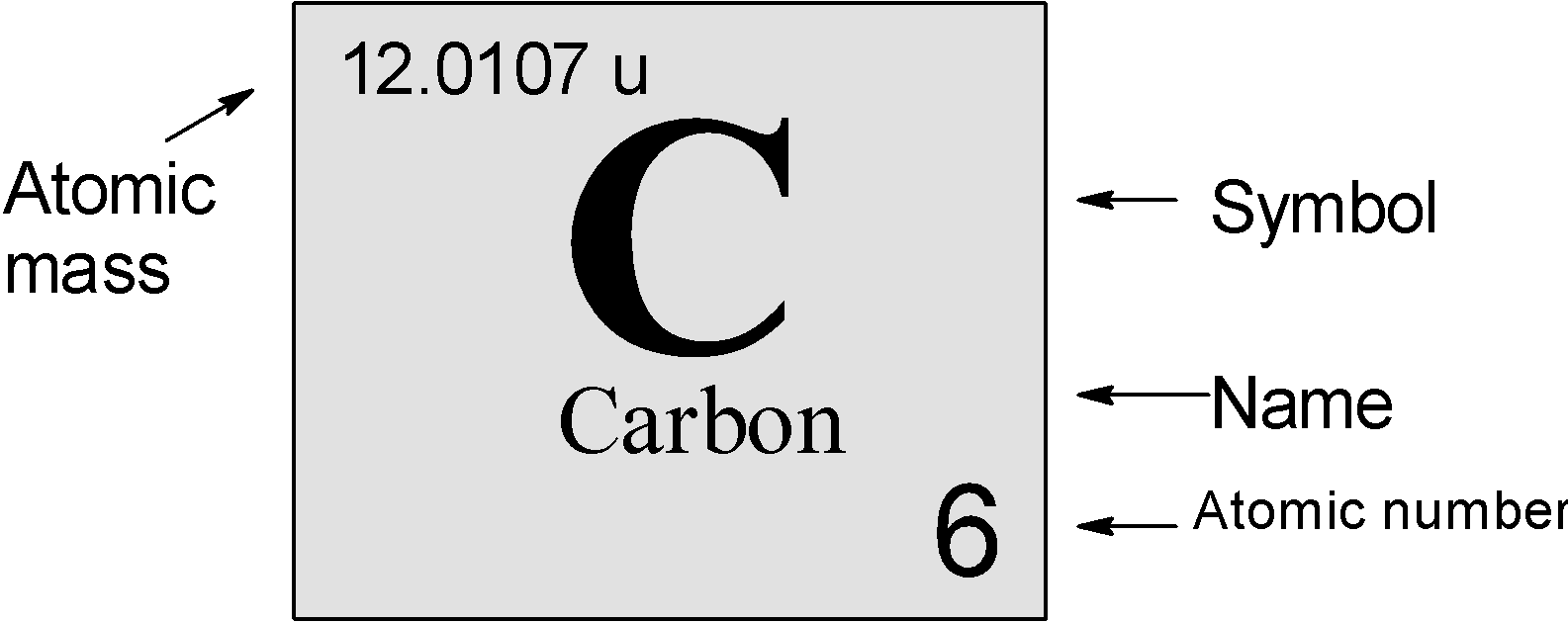
Atomic number of carbon atom is:
A) 1
B) 3
C) 6
D) 8
Answer
503.1k+ views
Hint: The atomic number is equal to the number of protons in the nucleus. In the periodic table, the atomic number increases as we move from left to right and top to bottom. The carbon atom has 6 protons in its nucleus and 6 electrons revolving around the nucleus in an uncharged state.
Complete step by step answer:
The atomic number of an element equals the protons found in the nucleus of an atom. The atomic number of the element is represented by the symbol Z. The atomic number is a unique identity of a chemical element. The Z is equal to the charge number of the nucleus.
We know that carbon C is a group 14 element. Each carbon atom has 6 protons and 6 electrons. We know that the atomic number is equal to the number of the protons, therefore the atomic number of carbon is 6.
Carbon plays a crucial role in defining life. Therefore its electronic configuration and its atomic number are of great importance.
Its electronic configuration is as follows
The valence shell of carbon contains the 4 electrons.it forms a covalent bond by sharing its valence electrons.
The elemental representation of carbon is as follows:

It can be also noted in the standard format
Therefore carbon has an atomic number of 6.
So, the correct answer is “Option C”.
Additional Information:
The atomic mass of an atom of an element is equal to the sum of neutrons and protons. The atomic mass is represented by A. The formula is,
The carbon has 6 protons and 6 neutrons present in the nucleus which stabilizes the nucleus. Therefore the atomic mass of carbon is 12.
Note: Sometimes we refer to the atomic number as the number of electrons present in an atom of an element. This is because in an uncharged or in zero charge state the total positive charge produced by the proton is nullified by the negatively charged electrons revolving around the nucleus. Thus, the atomic number equals the total number of electrons.
Complete step by step answer:
The atomic number of an element equals the protons found in the nucleus of an atom. The atomic number of the element is represented by the symbol Z. The atomic number is a unique identity of a chemical element. The Z is equal to the charge number of the nucleus.
We know that carbon C is a group 14 element. Each carbon atom has 6 protons and 6 electrons. We know that the atomic number is equal to the number of the protons, therefore the atomic number of carbon is 6.
Carbon plays a crucial role in defining life. Therefore its electronic configuration and its atomic number are of great importance.
Its electronic configuration is as follows
The valence shell of carbon contains the 4 electrons.it forms a covalent bond by sharing its valence electrons.
The elemental representation of carbon is as follows:

It can be also noted in the standard format
Therefore carbon has an atomic number of 6.
So, the correct answer is “Option C”.
Additional Information:
The atomic mass of an atom of an element is equal to the sum of neutrons and protons. The atomic mass is represented by A. The formula is,
The carbon has 6 protons and 6 neutrons present in the nucleus which stabilizes the nucleus. Therefore the atomic mass of carbon is 12.
Note: Sometimes we refer to the atomic number as the number of electrons present in an atom of an element. This is because in an uncharged or in zero charge state the total positive charge produced by the proton is nullified by the negatively charged electrons revolving around the nucleus. Thus, the atomic number equals the total number of electrons.
Recently Updated Pages
Master Class 11 Business Studies: Engaging Questions & Answers for Success

Master Class 11 Accountancy: Engaging Questions & Answers for Success

Master Class 11 Computer Science: Engaging Questions & Answers for Success

Master Class 11 English: Engaging Questions & Answers for Success

Master Class 11 Social Science: Engaging Questions & Answers for Success

Master Class 11 Economics: Engaging Questions & Answers for Success

Trending doubts
Which one is a true fish A Jellyfish B Starfish C Dogfish class 11 biology CBSE

State and prove Bernoullis theorem class 11 physics CBSE

1 ton equals to A 100 kg B 1000 kg C 10 kg D 10000 class 11 physics CBSE

In which part of the body the blood is purified oxygenation class 11 biology CBSE

One Metric ton is equal to kg A 10000 B 1000 C 100 class 11 physics CBSE

Difference Between Prokaryotic Cells and Eukaryotic Cells




